Two years ago, I defined custom distortion pedal for my bass pedalboard. You can check out the original article here: bass-overdrive-v1
I quickly figured out that this pedal does not only sound great with bass but also with my electric guitar to add a slight amount of distortion to my signal. I usually use it without blending in the original signal, with the silicone diode setting and all knobs at 1 o’clock. It also sounds great with my MKC – Centaur (DIY Klon pedal) build as a second stage drive, providing some more grit and a Informant Overdrive (DIY 1981 DRV) as the final distortion pedal.
For some time I’ve used a Templeboard Trio 28. It was huge and could fit most of my pedals, most of which I almost never used. Therefore I decided to downsize my pedalboard to the other extreme: A Temple Audio Solo 18 TR pedalboard. I originally intended to use this for my bass rig. When the ToneX One became available, I changed it to be a primary bass pedalboard with the option to be used for electric guitars as well. From there on, thinks escalated quickly. I also wanted to keep my BigSky and TimeLine pedals, my PolyTune and a large volume pedal. All of those are pretty large compared to the small footprint of the Solo 18 with 45,8 x 21,6 cm.
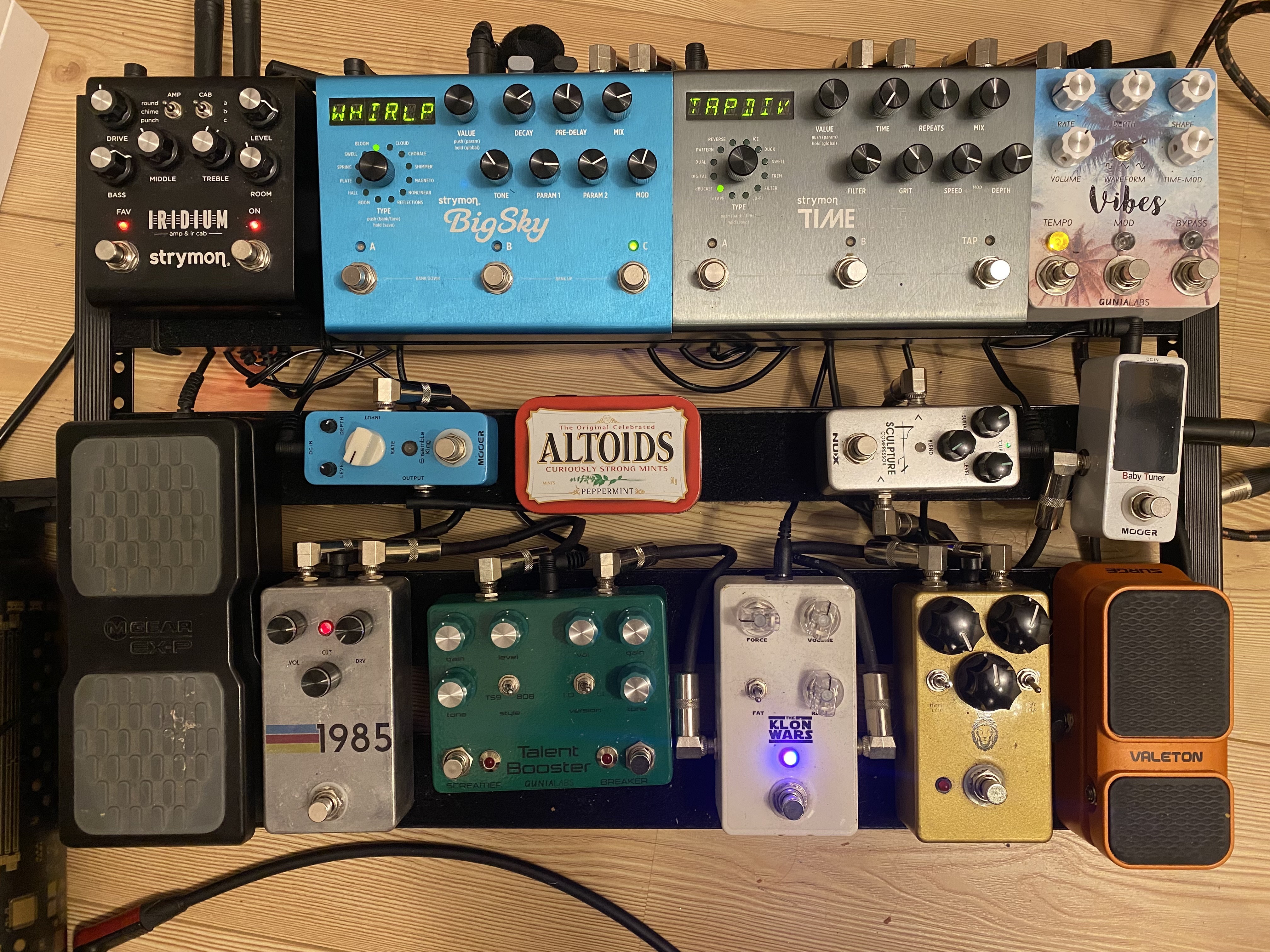
This quickly led me to add a riser to the Solo 18 to allow me to keep my Strymon Delay and Reverb pedals on the board. Below the riser is my compressor, which is almost always on and i rarely change its settings and the tonex one which serves as an amp + cab simulator.
I recently came across the Caesar Chorus and knew instantly: i need to build this! Unfortunately, I don’t have any more space left on the board.
Thats where the idea came to me: I can combine the MKC and my NightDRV pedal into one BB style enclosure.
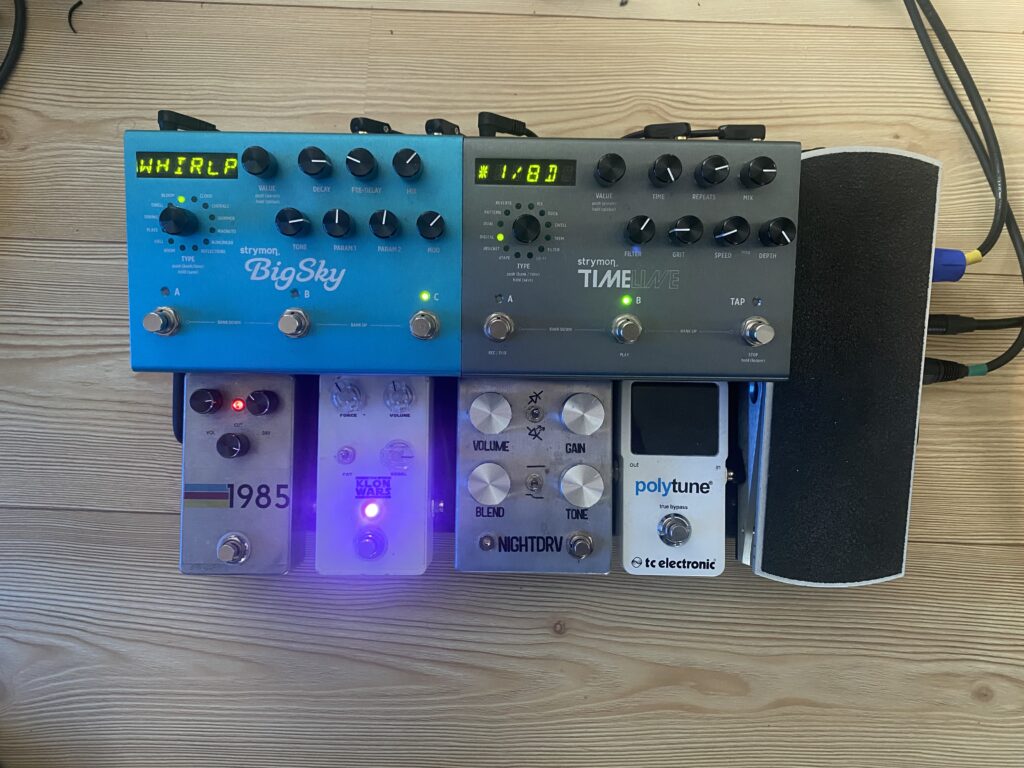
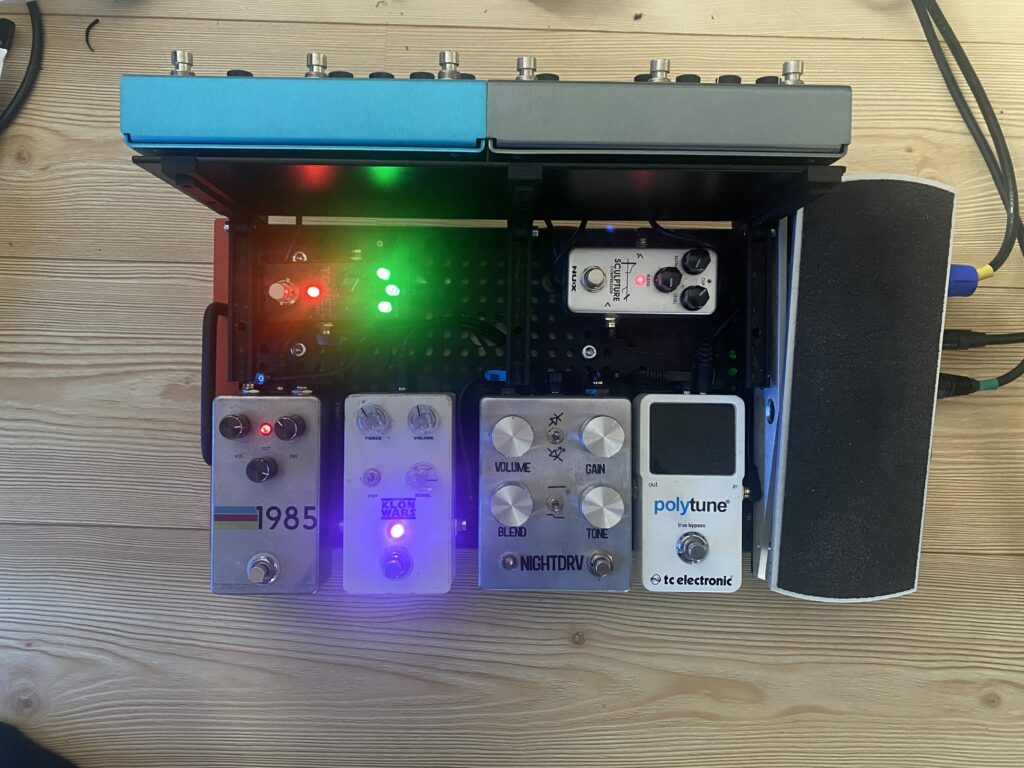
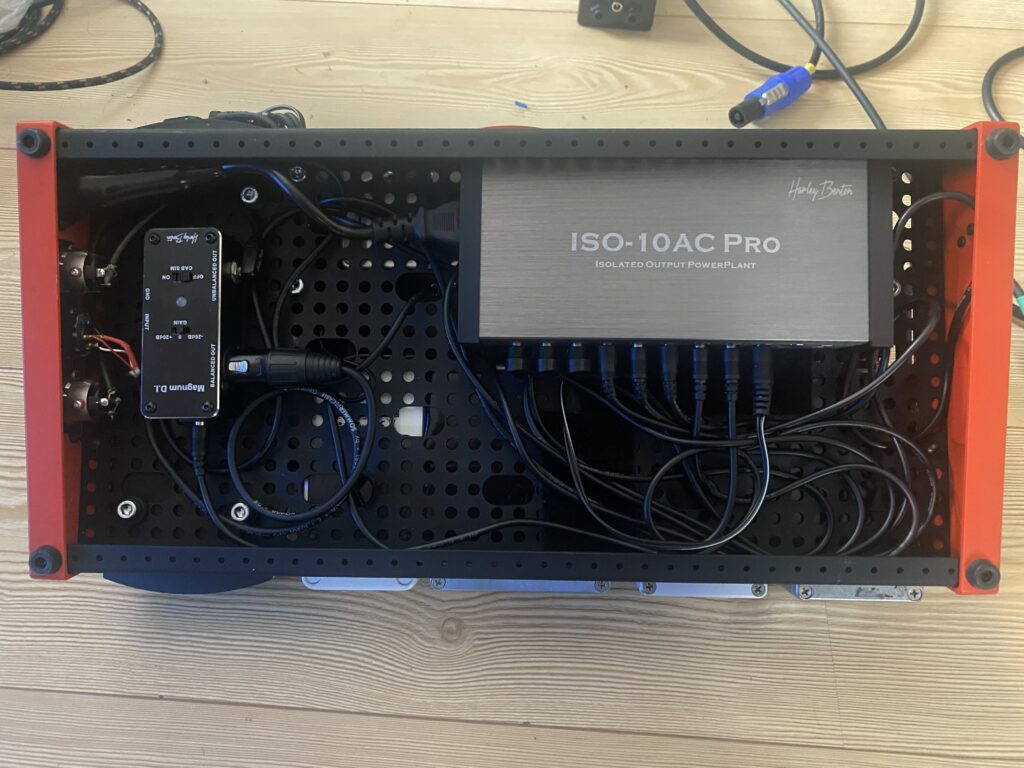
The idea is to keep the current pedals as they are and build a completely new one. Since I don’t intend to use the new one for bass, i will remove the blend circuit. This allows me to remove on knob and some circuitry. Additionally, I will also fix the phase inverting issue I had with the original prototype.
This results in the following circuit:
The phase issue is fixed by using the remaining opamp that was previously required for the blend circuit, to revert the phase back. No more major modifications have been done. This results in a very compact board layout:
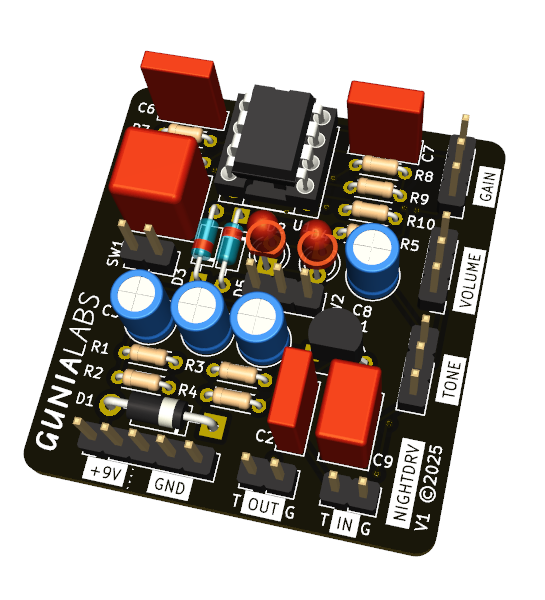
I have ordered this PCB and will keep you updated.
